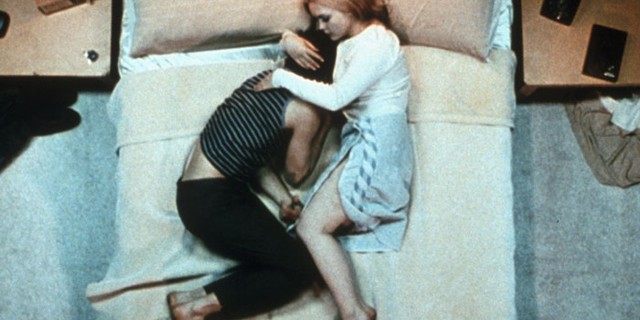
Behind the Mask: Cinematography in Buffalo 66
Fish Tank director of photography Robbie Ryan sees the light.
Ryan wrote the following programme note to accompany the screening of Buffalo 66 that he’d selected as part of last year's Behind The Mask series with the ICA
The spirit of independent cinema is fully explored inBuffalo 66 by Vincent Gallo. Gallo is credited with directing, editing and the music soundtrack; if he had his way he’d have cinematography too, but this was credited to Lance Acord, who made his feature debut with this film. And a mighty fine debut it is.
One of the most striking stand-out visual aspects of the film, and the reason I chose to show this print in the cinema today, is because you’ll more than likely never see another film put to print this way again. It was shot on 35mm reversal stock, which has now been discontinued. This particular stock is very difficult to shoot on because in processing it is unpredictable and unstable – two things which relate to Gallo’s character Billy Brown, who gets paroled to return home with his ‘new’ girl Layla (Christina Ricci).
The look of the film is almost another character in the film. Its colour palette, composition and lighting all mix gloriously to create a down-and-dirty world of paranoid insecure magic, with Gallo constantly at its heart about to explode.
What I love about Acord’s work is his honesty and simplicity in the way he shoots. This might be down to the fact that the shoot was 23 days long – a very short time to create such lovely visuals!
There are beautiful, magical scenes in the film that heighten the contrast between the dull reality and the aspirational dreamlike world that fills Buffalo 66. For example, one of my favourite scenes involves Billy’s dad (Ben Gazzara) crooning to Layla in a bedroom: the light fades from normal into a spotlit, Vegas-style stage show and then back again. This lighting style is used brilliantly throughout the film.
Probably the most famous scene is at the end where Gallo pulls a gun on someone: as he shoots, the camera goes into a ‘bullet time’ sequence – made famous in The Matrix but done first here! What Acord did was to have all the actors freeze in whatever pose they were in. He then shot slow motion and tracked around them at great speed, creating an effect that’s so lo-fi, tracking through time.
There are many things I could go on about in Buffalo 66 that I would have loved to talk about today in person (I’m very sorry not to be there with ye!).
But the main reason I think this film resonates today is because of the transformation cinema-watching is going through right now. It’s a very different environment to 1998 when this was first shown – the digital revolution means that cinema like the one Gallo inhabits is dying away because of the high cost of shooting this style of film, which is so important to the final look and experience. Nowadays everybody primarily chooses digital formats if they’re independent as it’s much more financially viable. This is understandable, but it makes me so sad, as no digital format could create the look that Buffalo 66 has: reversal film stock is unique.
So enjoy the inky blacks and the deep reds and the washed-out blues, because no matter how much Photo-After-Effect-Shopping you do, you’ll never see the like o’ this again!
Enjoy enjoy enjoy – I wish I was there too!
Robbie x
Behind The Mask is a series of screenings handpicked and introduced by a range of behind-the-scenes practitioners who feel their chosen film represents the best in their field.
Upcoming events include composer David Arnold introducing Psycho and writer Jesse Armstrong introducing Play It Again Sam. For more info on the series, click here .
